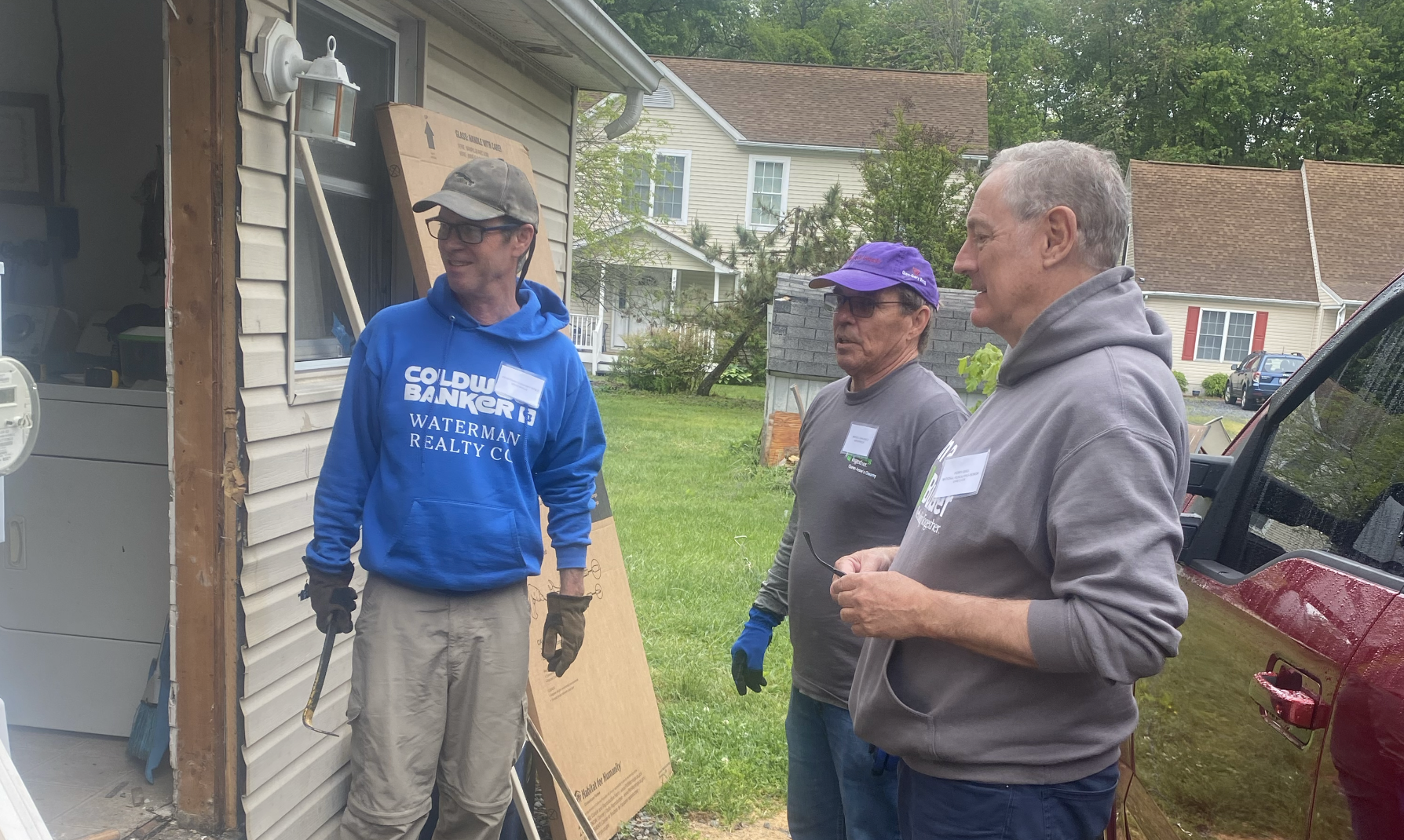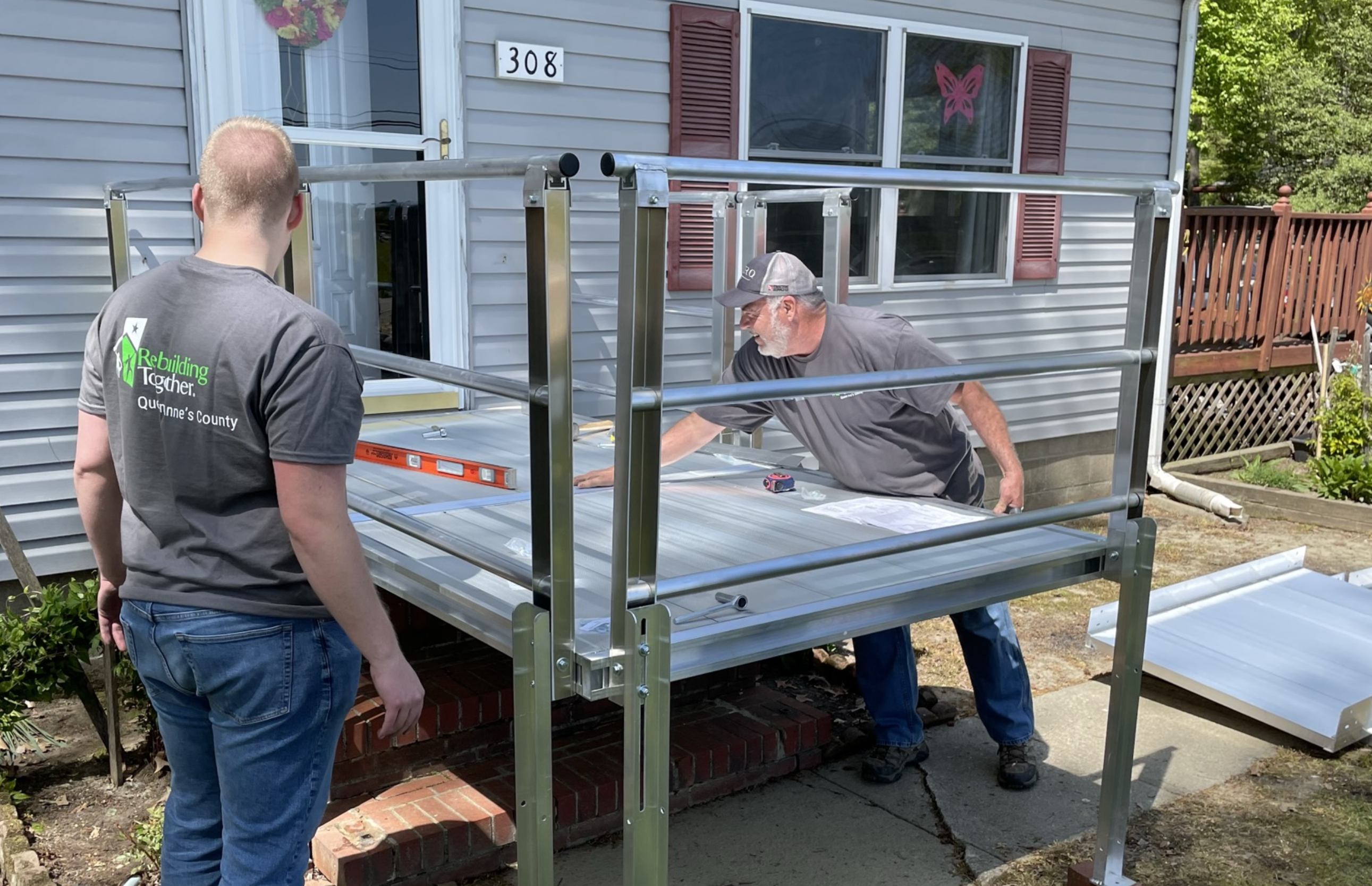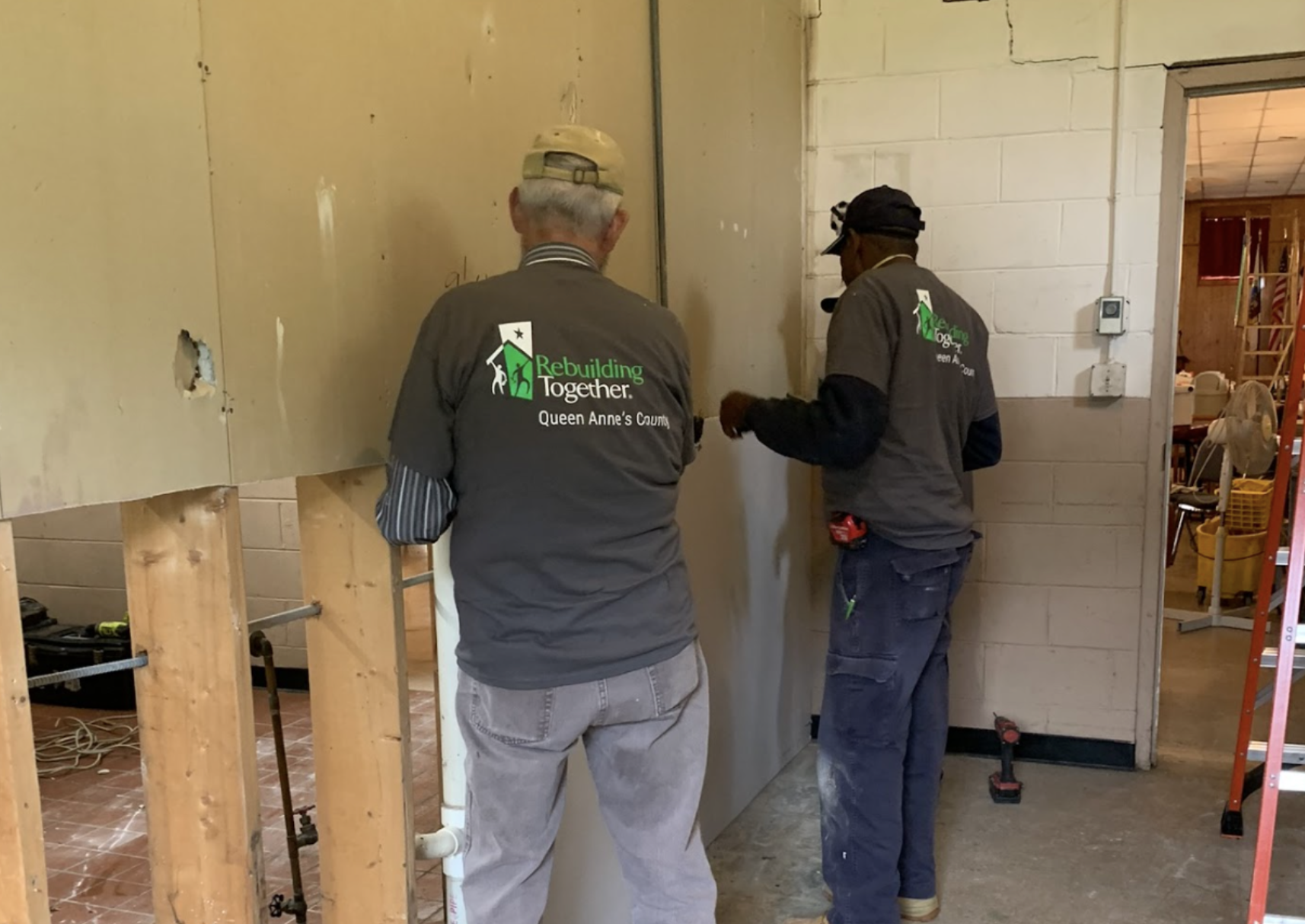In 1994, a group of concerned individuals in Queen Anne’s County recognized a pressing need within their community – homes in disrepair and families struggling to maintain them. This realization led to the current Rebuilding Together, a national non-profit organization dedicated to repairing homes, revitalizing communities, and rebuilding lives. Recently, the group received a $3,500 award from the Qlarant Foundation, a private non-profit organization focused on enhancing the quality of life for vulnerable populations in Maryland and the District of Columbia.
Larisa Thomas, President of Rebuilding Together of Queen Anne’s County (RTQAC), shares how this grant and the partnership with local businesses and organizations impact the lives of older adults, low-income, and disabled community members.
Originally known as ‘Christmas in April,’ Rebuilding Together was started by a group of volunteers in 1973 in Midland, Texas, who, on the last Saturday in April, gathered to help low-income homeowners who were struggling to repair and renovate their homes. The beneficiaries were primarily the elderly and disabled, trying to make ends meet on fixed incomes. In 1988, the organization expanded to other cities and changed its name to reflect what had become a year-round effort. Today, Rebuilding Together has over 100 affiliates nationwide and has helped repair and renovate over 200,000 homes.
The critical importance of the organization’s work cannot be overstated. Thomas shared a staggering statistic that highlights the urgent need for their services: “Nationwide, 76% of households served by Rebuilding Together have a resident over the age of 65, and 51% have a resident with a disability, many of which have mobility issues that make it difficult to remain safely at home. And that also tends to be true in Queen Anne’s county,” she said. She describes how the domino effect of neglect can escalate from a simple roof leak into damaged floors and compromised structures, adding to the financial burden of homeowners who are already struggling to make ends meet.

(L-R) Jonathan Olsavsky, Project leader and board member Wendell Carr, Perry Bird (right) Sr. Director, Network Advancement for National Rebuilding Together.
At the heart of RTQAC is its Safe and Healthy Housing program. It follows eight principles that ensure homes are: dry, clean, safe, pest-free, contaminant-free, well-ventilated, maintained, and thermally controlled. They also use a detailed 25-point checklist to assess homes and fix potential issues that homeowners might not know about.
The best illustration of the impact of RTQAC’s work is through the stories of transformed lives. Thomas recounts an instance where grandparents were raising grandchildren in a home where the pipes were freezing in the wintertime. “We came in and made it safe for this grandmother who was doing her best just to make a difference in her grandkid’s lives.” At another home, we fixed a leaky roof, plumbing that wasn’t working, and holes in the floor. These were all safety issues that need to be addressed.”
The process of identifying eligible homeowners for the free program involves a multi-faceted approach. Collaborations with local departments and agencies, such as the Department of Aging, ensure those in need are connected to available services. Word of mouth also plays a significant role. Once identified, applicants can either call or submit an online form. The organization also participates in community events and employs various outreach methods to spread awareness and attract volunteers.
Of course, volunteers are the backbone of this program. Those who work with RTQAC come from a variety of backgrounds. Some are retired professionals with experience in construction or home repair, while others are community members who simply want to give back. All volunteers receive training and support from the organization to ensure that repairs are completed safely and effectively. There is also funding available to do home repairs through contractors. Thomas said, “This is the new direction that Rebuilding Together can do, which allows us to have a bigger impact.”
Looking ahead, Thomas envisions a brighter future for RTQAC. More board members, an expanded volunteer network, increased community engagement, and sustained funding are on her radar. There are diverse sources of financial lifelines that power RTQAC’s efforts, including individual donations, government support, and grants from organizations such as the Qlarant Foundation. She envisions a self-sustaining organization, making an enduring difference in the lives of those they serve. “Our goal is to complete eight projects this year and then double that number to 16 next year,” she said.
For more information and see how you can help Rebuilding Together Queen Anne’s County, please go here. For more information about the Qlarant Foundation, please go here.





Write a Letter to the Editor on this Article
We encourage readers to offer their point of view on this article by submitting the following form. Editing is sometimes necessary and is done at the discretion of the editorial staff.